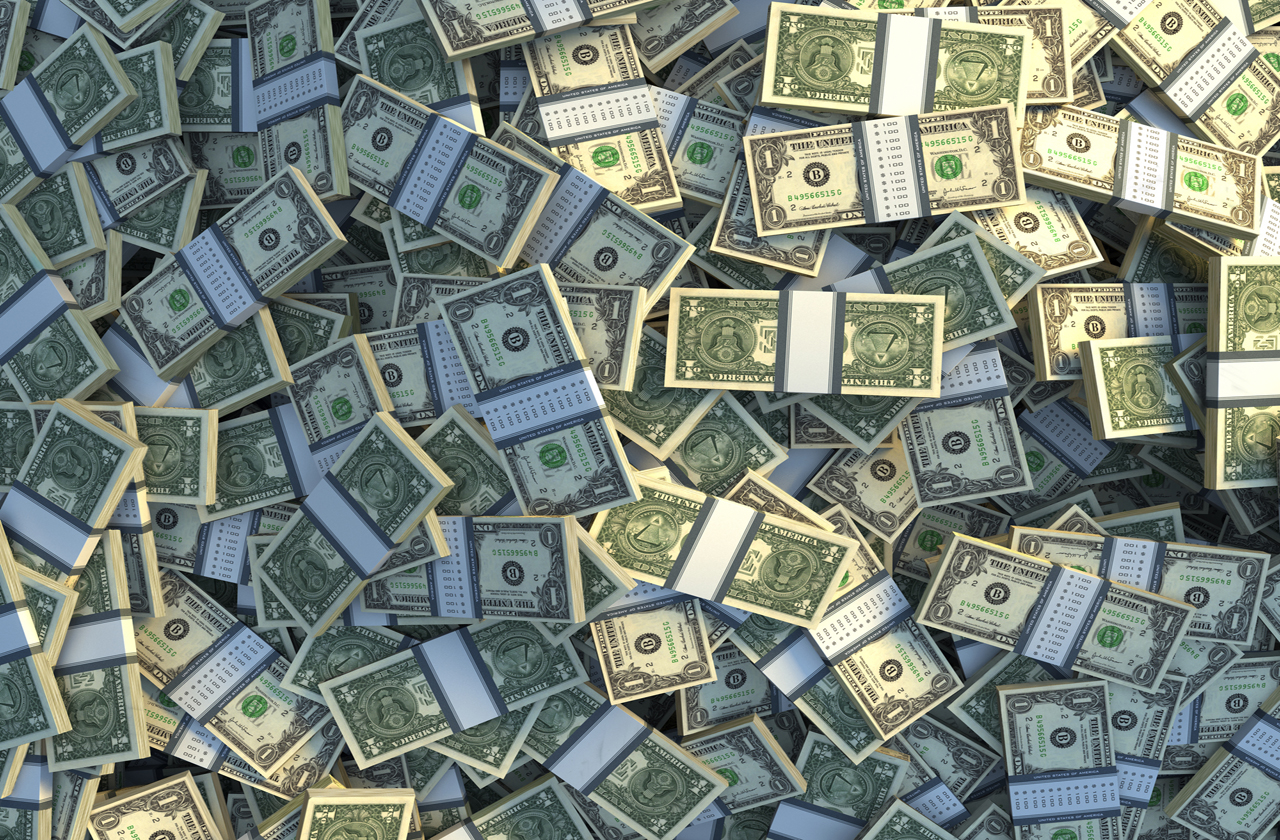Investors: Focus on Cash Flow, Not Returns
Investors who zero in on their portfolio’s bottom line are missing the point, and they could be pressured into making a costly mistake.


Thanks to the financial services industry, over the decades investors have been conditioned to focus on the returns their portfolios generate, more than on cash flow. The industry has emphasized returns, as they make a great sales tool for financial professionals. But that hardly helps investors (more on the problem with historical and average returns in my next column).
Of course, it is important to have positive returns, but simply focusing on this elevates what I call “sequence of returns risk.” This refers to the phenomena where portfolio returns in the early part of the investment cycle have a disproportionate impact on the long-term outcome of the portfolio – ergo, a 15% loss in year one has a compounding effect that is much greater than having a 15% lost in later years of the investment cycle.
The psychological impact of this is that it often causes investors to change their investment allocation to a more conservative mix, or worse yet sell near market lows, thereby compounding the impact of the early negative returns and making achieving their investment goals much more challenging. If, however, investors were to simply focus on cash flow, then they probably wouldn’t give in to any temptations to time the market or take corrective actions during a downtown, which is a natural part of a full market cycle.
From just $107.88 $24.99 for Kiplinger Personal Finance
Become a smarter, better informed investor. Subscribe from just $107.88 $24.99, plus get up to 4 Special Issues

Sign up for Kiplinger’s Free Newsletters
Profit and prosper with the best of expert advice on investing, taxes, retirement, personal finance and more - straight to your e-mail.
Profit and prosper with the best of expert advice - straight to your e-mail.
For instance, take two identical $1 million portfolios, which are set up to distribute $50,000 annually. Investor No. 1 has the unfortunate luck of investing at the peak of the market cycle and being subjected to two negative performance years at the outset. Investor No. 2 experiences positive returns for the first two years.
| Year | Portfolio 1 annual return | Ending balance after $50k distribution | Year | Portfolio 2 annual return | Ending balance after $50k distribution |
|---|---|---|---|---|---|
| 1 | -5% | $945,000 | 1 | 10% | $1,050,000 |
| 2 | -3% | $866,650 | 2 | 20% | $1,210,000 |
| 3 | 10% | $903,315 | 3 | -3% | $1,123,700 |
| 4 | 7% | $916,547 | 4 | -5% | $1,017,515 |
| 5 | -15% | $729,065 | 5 | 7% | $1,038,741 |
| 6 | 20% | $824,878 | 6 | -15% | $832,930 |
| 7 | 1% | $783,127 | 7 | 8% | $849,564 |
| 8 | -3% | $709,633 | 8 | -3% | $774,077 |
| 9 | 8% | $716,404 | 9 | 7% | $778,263 |
| 10 | 7% | $716,552 | 10 | 1% | $736,045 |
Average annual return for both portfolios = 2.7%
Experience has taught me that investors like Investor No. 1 will likely become nervous, and at the very least will doubt their strategy and be tempted to sell. Both portfolios have a 10-year average annual return of 2.7%, and both distribute the desired $50,000. The ending balance between the two portfolios is about $20,000 apart, well within a reasonable margin of error for long-term investment return expectations.
Astute investors know that portfolio returns are heavily influenced by market cycles, which are uncontrollable. By focusing on cash-flow, investors are better able to ignore short-term market gyrations and sequence of returns risk. In my next column, I’ll be discussing the importance and significant impact portfolio costs have on long-term performance.
This column is the third in a six-part series on investor education.
- Column 1 – Understanding your goals
- Column 2 – Why benchmarking to the S&P 500 is not a good strategy
- Column 3 – It’s about cash-flow, not returns
- Column 4 – How much are you paying for your portfolio?
- Column 5 – 5 critical questions to ask your financial advisor
- Column 6 – ‘Senior Inflation’ the not so silent retirement killer
Profit and prosper with the best of Kiplinger's advice on investing, taxes, retirement, personal finance and much more. Delivered daily. Enter your email in the box and click Sign Me Up.

Oliver Pursche is the Chief Market Strategist for Bruderman Asset Management, an SEC-registered investment advisory firm with over $1 billion in assets under management and an additional $400 million under advisement through its affiliated broker dealer, Bruderman Brothers, LLC. Pursche is a recognized authority on global affairs and investment policy, as well as a regular contributor on CNBC, Bloomberg and Fox Business. Additionally, he is a monthly contributing columnist for Forbes and Kiplinger.com, a member of the Harvard Business Review Advisory Council and a monthly participant of the NY Federal Reserve Bank Business Leaders Survey, and the author of "Immigrants: The Economic Force at our Door."
-
 Dow Hits a Record High After December Jobs Report: Stock Market Today
Dow Hits a Record High After December Jobs Report: Stock Market TodayThe S&P 500 also closed the week at its highest level on record, thanks to strong gains for Intel and Vistra.
-
 Is Home Insurance Tax Deductible?
Is Home Insurance Tax Deductible?With home insurance rates on the rise, you might be hoping to at least claim the cost as a tax deduction. Here's what you need to know ahead of tax season.
-
 The December Jobs Report Is Out. Here's What It Means for the Next Fed Meeting
The December Jobs Report Is Out. Here's What It Means for the Next Fed MeetingThe December jobs report signaled a sluggish labor market, but it's not weak enough for the Fed to cut rates later this month.
-
 4 Simple Money Targets to Aim for in 2026 (And How to Hit Them), From a Financial Planner
4 Simple Money Targets to Aim for in 2026 (And How to Hit Them), From a Financial PlannerWhile January is the perfect time to strengthen your financial well-being, you're more likely to succeed if you set realistic goals and work with a partner.
-
 Estate Planning Isn't Just for the Ultra-Wealthy
Estate Planning Isn't Just for the Ultra-WealthyIf you've acquired assets over time, even just a home and some savings, you have an estate. That means you need a plan for that estate for your beneficiaries.
-
 How to Be a Smart Insurance Shopper: The Price Might Be Right, But the Coverage Might Not Be
How to Be a Smart Insurance Shopper: The Price Might Be Right, But the Coverage Might Not BeChoosing the cheapest policy could cost you when you have a loss. You'll get the best results if you focus on the right coverage with the help of a good agent.
-
 7 Reasons Why Your Portfolio Needs Short-Term Bond ETFs
7 Reasons Why Your Portfolio Needs Short-Term Bond ETFsMoney market funds are a safe option for your cash, but ultra-short and short-term bond ETFs also deserve consideration. Here are seven reasons why.
-
 I'm a Wealth Planner: Forget 2026 Market Forecasts and Focus on These 3 Goals for Financial Success
I'm a Wealth Planner: Forget 2026 Market Forecasts and Focus on These 3 Goals for Financial SuccessWe know the economy is unpredictable and markets will do what they do, no matter who predicts what. Here's how to focus on what you can control.
-
 I'm a Financial Adviser: Why In-Person Financial Guidance Remains the Gold Standard
I'm a Financial Adviser: Why In-Person Financial Guidance Remains the Gold StandardFace-to-face conversations between advisers and clients provide the human touch that encourages accountability and a real connection.
-
 This Is How You Can Turn Your Home Equity Into a Retirement Buffer
This Is How You Can Turn Your Home Equity Into a Retirement BufferIf you're one of the many homeowners who has the bulk of your net worth tied up in your home equity, you might consider using that equity as a planning tool.
-
 Feeling Too Guilty to Spend in Retirement? You Really Need to Get Over That
Feeling Too Guilty to Spend in Retirement? You Really Need to Get Over ThatAre you living below your means in retirement because you fear not having enough to leave to your kids? Here's how to get over that.